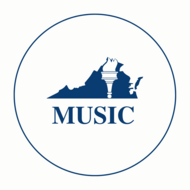Interactive Map of Virginia's Crooked Road Music History Trail
(View Complete Item Description)Students will explore Virginia’s musical heritage through discovery of the venues and cultural centers promoting traditional Appalachian, old-time, and Bluegrass music. After researching and exploring the resources along the Virginia’s Crooked Road, students will create a multi-media presentation describing one or more of the venues along the 333-mile Heritage Music trail including people that visited the area, musical styles, groups that performed, and the function of music in the cultural area. Students will create QR codes applied to an interactive map of The Crooked Road describing the over 50 venues that promote the milestones of Appalachian, old time, bluegrass, and country music.
Material Type: Activity/Lab


















